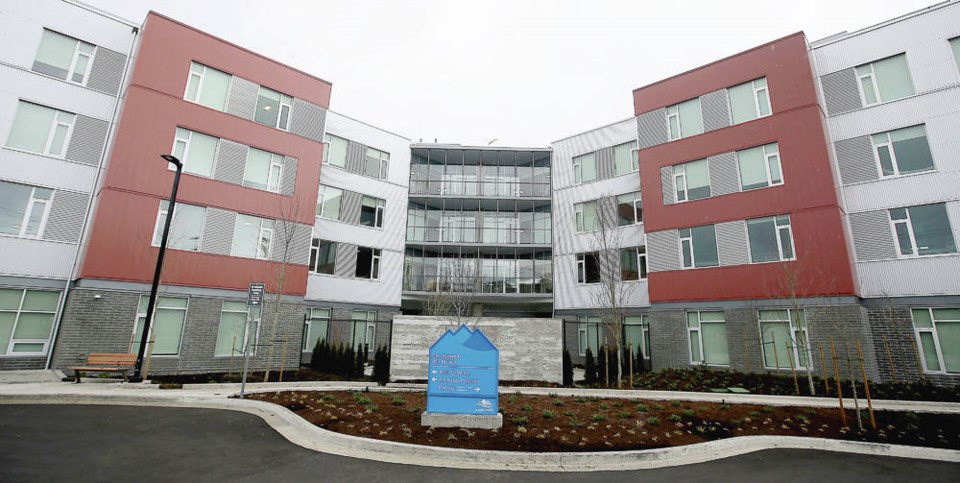Most residents in long-term care likely qualify to have an essential visitor, but figures from B.C.’s seniors advocate and the province show fewer than 25 per cent — and maybe as few as 15 per cent — actually do.
Guidelines posted by the B.C. Centre for Disease Control last week clarify the role of an essential visitor and make clear that residents and patients can have both an essential and a social visitor.
Essential visitors are primarily family, friends or registered volunteers who provide compassionate care, emotional support and assistance with feeding, mobility or decision-making.
B.C. Health Minister Adrian Dix recently said there are about 8,000 people with essential visitor status in the province — about 24 per cent of what the Office of the Seniors Advocate says is about 34,000 residents in licensed long-term care homes in B.C.
But seniors advocate Isobel Mackenzie said results of her office’s five-week survey of residents and family members on the impact of visit restrictions on long-term care and assisted living, published in November, shows the number is closer to 15 per cent.
And yet “a very large proportion” of residents in long-term care likely require some kind of support with mobility or decision making or emotional support, she said.
Mackenzie said she doesn’t know why the number of essential visitors is so low.
“I have the same question. I think some are unaware they can apply, but I think there are widely different application of the guidelines by care homes,” she said. “Some care homes have no essential visitors and it is difficult to understand how that is possible, given the clinical profiles of who is living in long-term care.”
Mackenzie also questioned the figure of 8,000 essential visitors, and said she has asked the ministry for more information.
She said she is hopeful that with the province’s recent clarification of visitor guidelines, families will be more likely to seek essential-visitor status and care homes will be more likely to grant it.
Essential-visitor status is limited to one person per resident or patient, with the exception of palliative or end-of-life care, when more family members are allowed.
During an outbreak, essential visitors are allowed while social visitors are prohibited until the outbreak is declared over.
The new guidance from the province defines a social visitor as one adult designated family member or friend allowed visits that are scheduled in advance. Island Health says that designation should be made in a collaborative way between the resident, family and health care representative. There is no mandate, but the health authority expects care homes to allow social visitors one visit per week per resident.
Essential visits, as well as social visits, can take place in the resident’s room, provided it’s a single room, but there are inconsistencies in the implementation of these rules in some health regions, something that will likely be reviewed after the pandemic, said Mackenzie.
Formal monitoring of visits is considered intrusive and not expected, according to Island Health. Outdoor food, gifts and flowers can all be brought in, along with healthy pets, as long as they are restricted to the room of the resident they are visiting.
Mackenzie said uptake of the COVID‑19 vaccine has so far been good among long-term care health workers.
With just 69 per cent of staff vaccinated against the flu in long-term care homes last year, there had been concern about whether all long-term care staff would step up to be vaccinated.
“I don’t think [not getting the vaccine] is as prolific as we are hearing,” said Mackenzie. “This is a more serious disease than influenza.”
Provincial health officer Dr. Bonnie Henry said this week that while all of the data has not yet been collated, rates of vaccination have been “very high” in long-term care homes. In facilities with outbreaks, 100 per cent of staff and residents are being immunized, she said.
A recent Angus Reid poll found 61 per cent of British Columbians say they are ready to be vaccinated, while 28 say they will get the shot eventually, with 11 per cent unsure or declining to comment.
Following arbitration, the Health Employers Association of B.C. announced in December 2019 that while it remains mandatory for health-care professionals to report their vaccination status, employees and physicians won’t be disciplined for failing to be immunized or wear a mask during flu season.
Meanwhile, Mackenzie said testing for the COVID-19 virus — whether rapid or lab-based — could still play a role in preventing outbreaks in health-care settings. She questioned why hockey teams and movie studios continue to test while B.C. does not routinely do so in health-care settings.
“We still have several months to go, and I think, given that, it is not unreasonable for us to look at our overall testing strategy,” she said.
B.C.’s strategy of testing primarily those who have symptoms — apart from testing staff and residents when there is an outbreak in a health-care setting — might need to shift, she said.



